I decided to reply to David's Post in the Haven as it probably should be posted here instead of the Power tool part.
1. Before there was good enough Steel and the technology to make what we know as a Hand Saw, most saws were of the Fret (a thin very flexible blade) type, they needed a way to stiffen the blade so it could be used.
Early one piece Hand saws had a stiffener added to the back to help support the blade and keep it from bending and kinking. We still have these and they are called Back Saws, shortened from the original Backed Saws.
2. Bowsaws are part of a family of saws often called Frame Saws or Fret Saws as they use a frame to tension a thin Fret (blade) so that they would perform properly.
3. The most common of these is the Bow saw of which there are two main types, the common Bow Saw and the Turning Saw. The other type are called Full Framed Saws.
3. Most of the family of old or antique frame saws that you will find are of the Craftsman made Bow Type as they could easily buy a Fret (blade) of the proper tooth configuration, length and width and make their own frame as they could make a frame cheaper than they could buy it.
4. A few companies did make a complete saw, but these are a rare find as most modern craftsmen have switched to the newer Hand Saw and the old wood framed ones got laid aside to rot or waste away as they have more bulk to them than the new fangled ones. They can easily be taken apart for storage tho and some Craftsmen especially in Europe have clung to them over the years as they are very efficient cutting machines. I found one side of a Disston Bow Turning Saw and mfg the other side and the stretcher for it. Luckily I got the side with the Disston name on it.
5. Framed Saws and Bow Saws take a little getting used to but when sharpened right and you get used to them, are very efficient and easy to use.
Here are some of my shop made Saws. You will notice that the twisting or winding stick is always on the right side so I know which end to grab as the teeth cut only one way.
A Bow Turning Saw using a Coping Saw blade.
A 16 tpi Bow Saw.
A 10 tpi Bow Saw.
A deep throat Turning Saw with rip teeth.
A Double Bow Saw with one blade rip and the other crosscut.
A small Framed Veneer Saw.
A large Framed Rip Saw with 4.5 tpi.
A large Framed Pit Style Saw with 2 tpi.
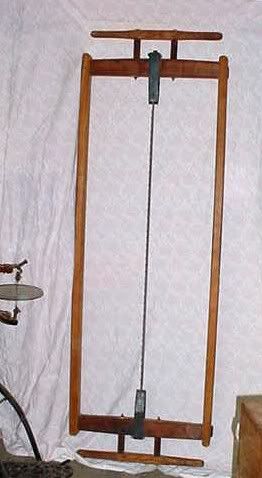







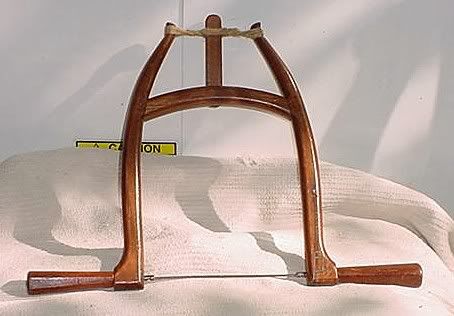
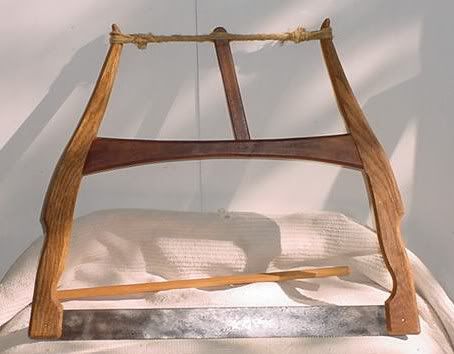
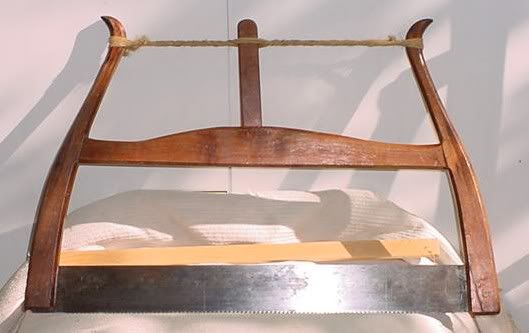
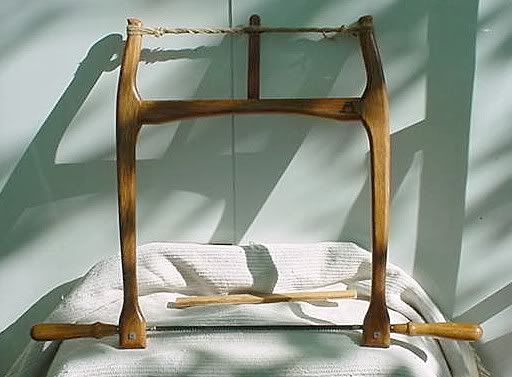
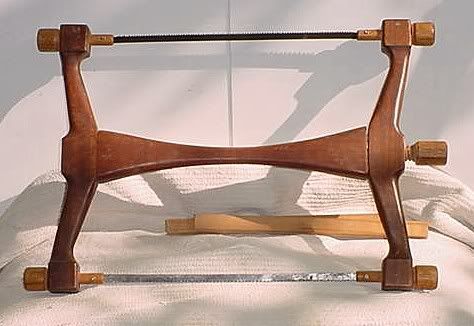
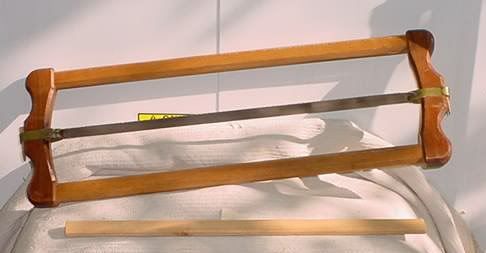
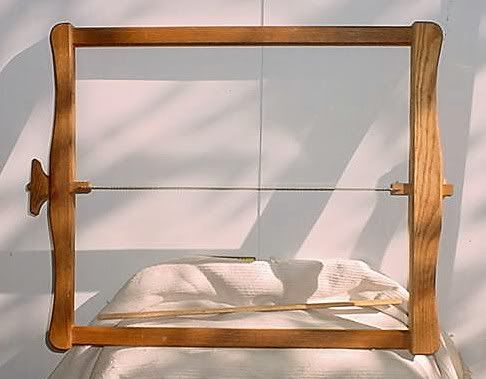
 Jr.
Jr. 

 Reply With Quote
Reply With Quote